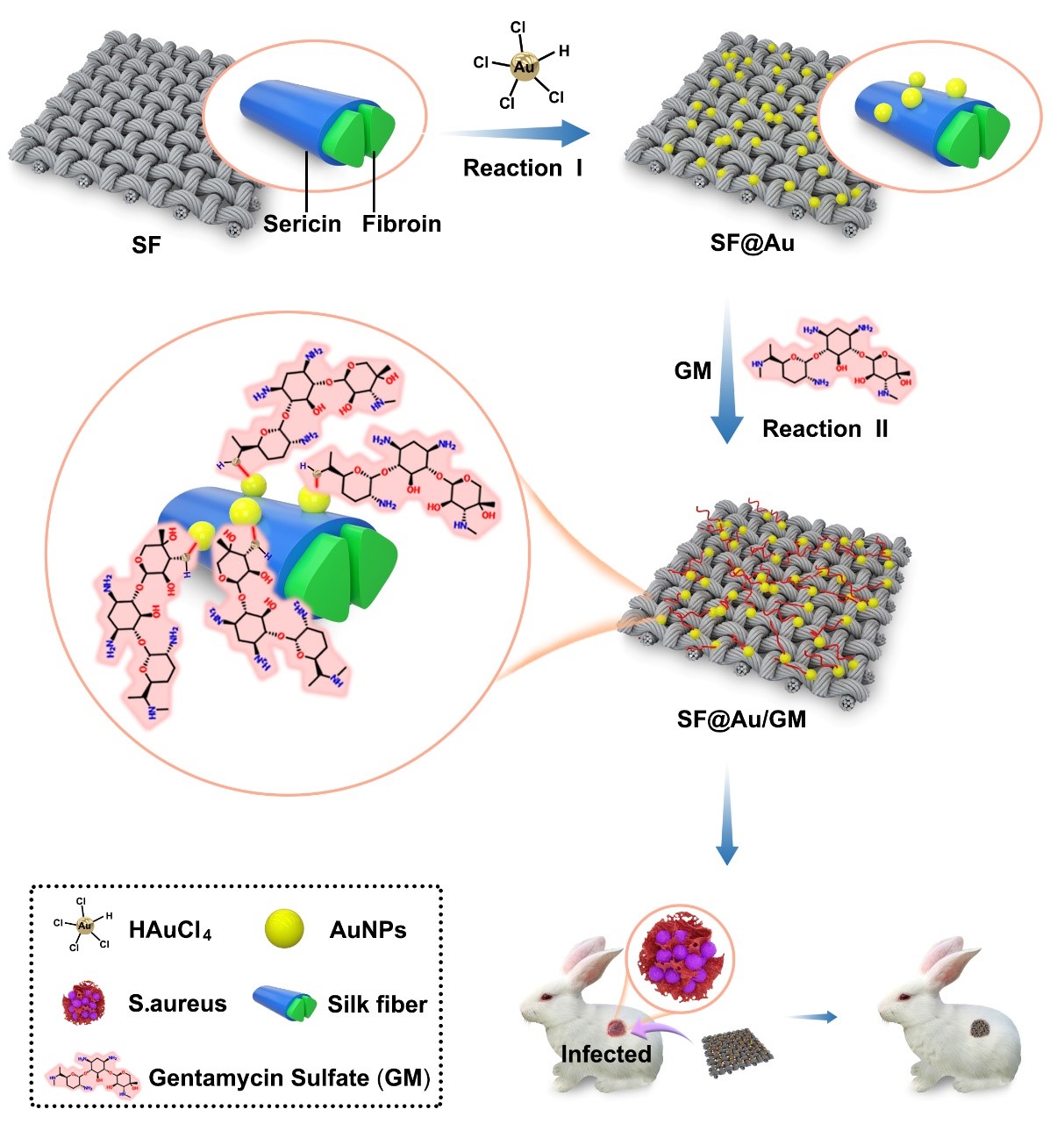Minimizing antibiotic dosage through in situ formation of gold nanoparticles across antibacterial wound dressings: A facile approach using silk fabric as the base substrate. Journal of Cleaner Production 2021, 243, 118604.
Published in Journal of Cleaner Production, 2020

Antibiotics in wound dressing materials are critical in wound therapy; however, their overuse has led to increased concerns. In the present study, gold nanoparticles (AuNPs) were used to amplify the antibacterial effect of the typical antibiotic, gentamicin sulfate (GM), to reduce its dosage during wound therapy. A facile method for the preparation of antibacterial wound dressing using woven silk fabrics (SF) was developed. By simple treatment of SF with HAuCl4 solution in a short process, AuNPs were loaded across the fabric (SF@Au) through in situ reduction of HAuCl4 by the sericin from silk; a subsequent simple process led to SF@Au conjugation with gentamicin sulfate (GM) to form a novel dressing fabric (SF@Au/GM). The results demonstrated that considerably enhanced antibacterial performance could be obtained even when minimal GM was applied with AuNPs, compared to the large GM quantities used without AuNPs. In addition, the fabric displayed good biocompatibility and serviceability as a wound dressing. Animal experiments revealed that SF@Au/GM performed better than the commercial wound dressing Aquacel Ag®, as faster growth of the cell appendages and epidermis inside wounds observed after therapy on day 15. These findings offer a potential option for reducing the risk of antibiotics overuse during wound therapy. Moreover, the study addresses the cleaner production of advanced biomedical textiles as the proposed preparation method was highly practical for cleaner mass production.
